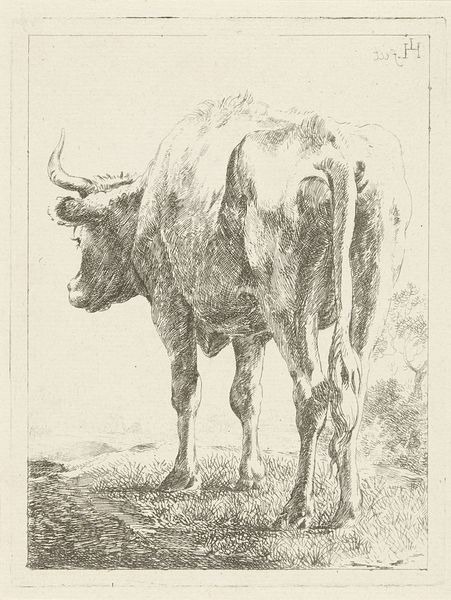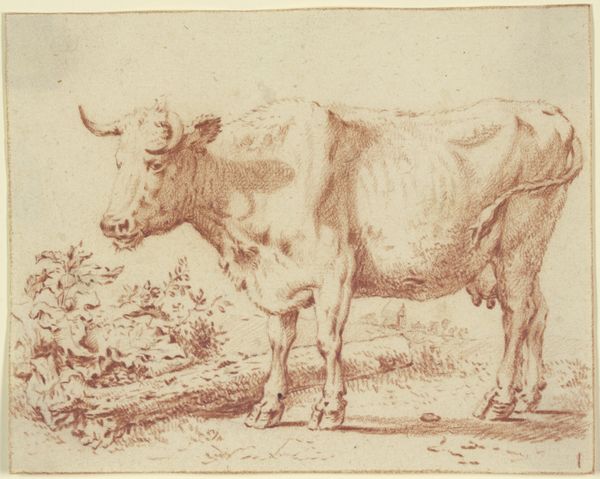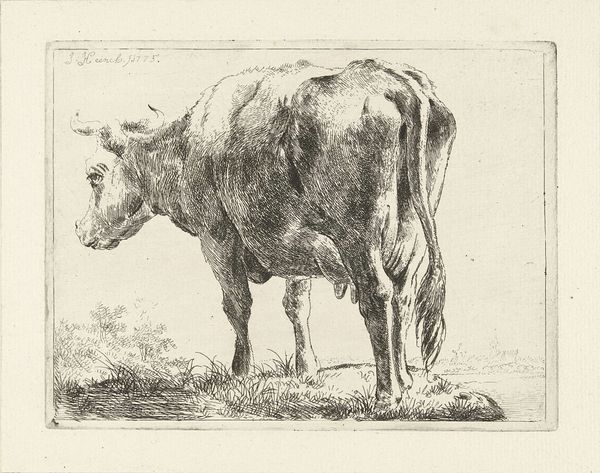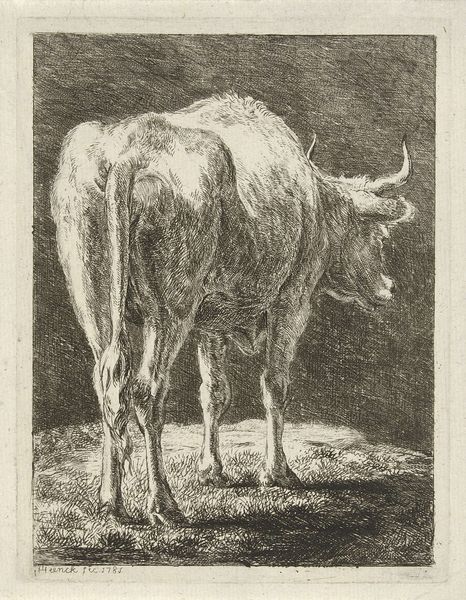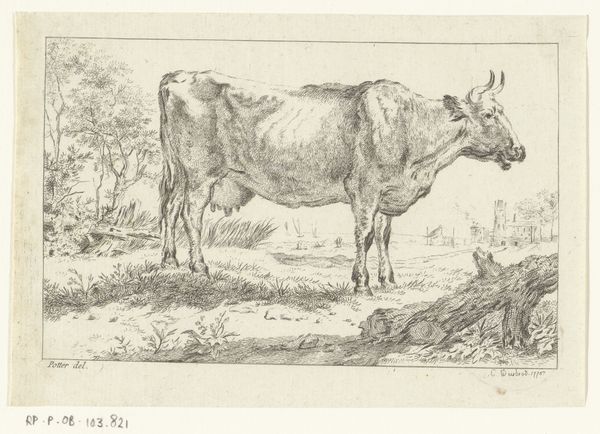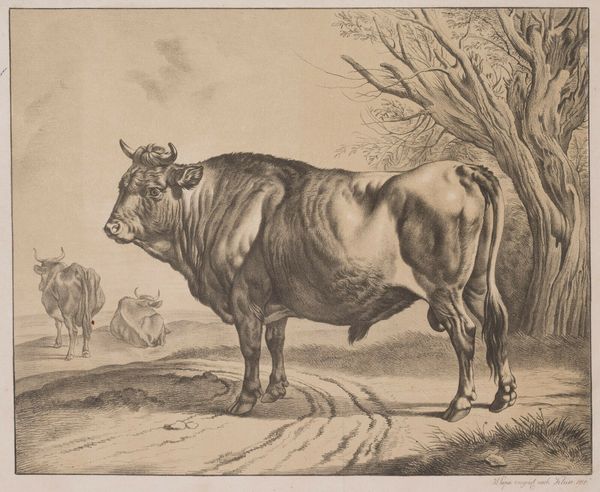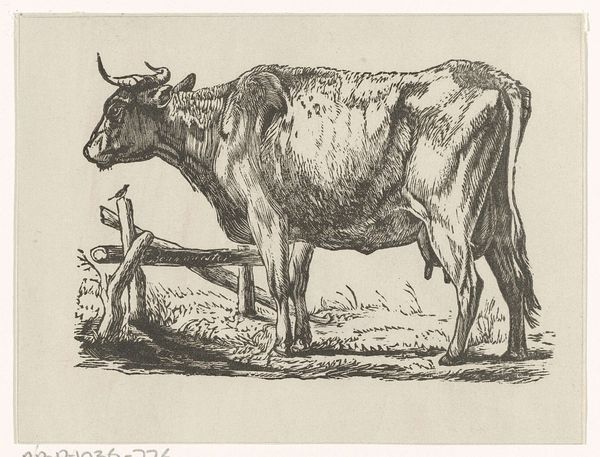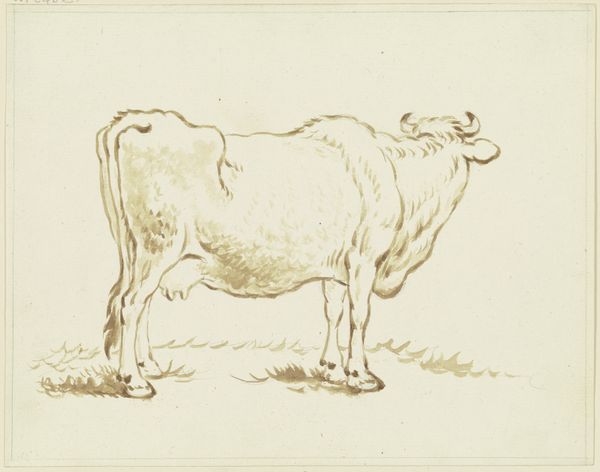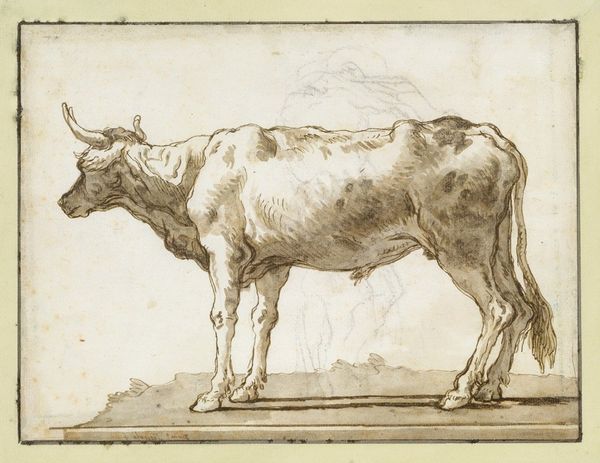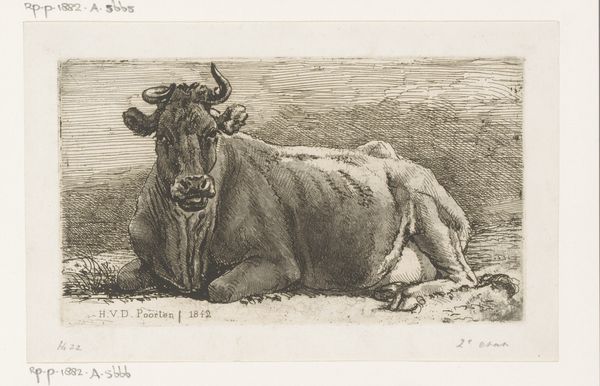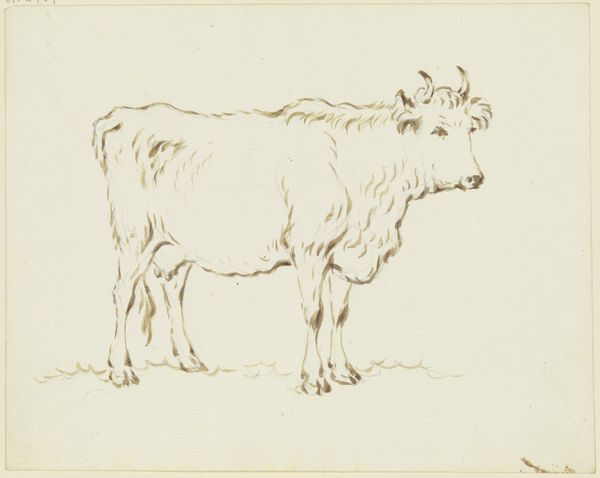
drawing, etching
#
drawing
#
etching
#
landscape
#
figuration
#
pencil drawing
#
realism
Dimensions: height 178 mm, width 135
Copyright: Rijks Museum: Open Domain
Editor: We’re looking at "Cow in a Landscape," an etching by Jabes Heenck, from around 1767 to 1781. It's striking how monumental the cow seems, dominating the scene while the landscape shrinks into the background. What's your take on it? Curator: This piece presents a very deliberate artistic choice. Why emphasize this particular bovine figure? Consider the agricultural shifts occurring in the Netherlands during that time. Land reclamation, selective breeding - these practices directly influenced the economic and social landscape. Heenck is, consciously or not, reflecting this reality through his work. The monumental size isn't just artistic preference; it's a statement about the centrality of livestock, and by extension farming, to Dutch identity and prosperity. Editor: That's interesting. I hadn't thought of the size as a social comment. Does the windmill in the background contribute to that message? Curator: Precisely! The windmill symbolizes Dutch ingenuity in transforming the landscape. So, how does that juxapose the cow's powerful stature in the front? It demonstrates humanity's hand in manipulating, in crafting even this, supposedly pastoral scene. Is this, ultimately, simply rural life depicted, or a reflection of Dutch power over land, and animal? Editor: It’s definitely more complex than I initially thought. Seeing it within that historical context makes a huge difference. Thanks for pointing that out. Curator: Indeed. Remember, art doesn't exist in a vacuum. Its relationship with historical and cultural currents is crucial to interpretation. Hopefully we see art differently now!
Comments
No comments
Be the first to comment and join the conversation on the ultimate creative platform.
